The disappearance of the Titan shows that the US Coast Guard still has many limitations in terms of resources and equipment for search and rescue in deep sea areas.
The Titan, operated by OceanGate and offering tours of the Titanic wreck, began its dive into the Atlantic Ocean early on June 18 and lost contact with the ship on the surface about an hour and 45 minutes later. The Titan was carrying five people and enough oxygen to last them 96 hours, starting at 6 a.m. on June 18.
By the time the Coast Guard held a press conference on the incident on June 19, the ship was believed to have about 70 hours of oxygen left, according to Rear Admiral John Mauger, who is in charge of the search for the Titan. His team and the Canadian Coast Guard are searching an area about 900 miles (1,450 kilometers) off Cape Cod, Massachusetts.
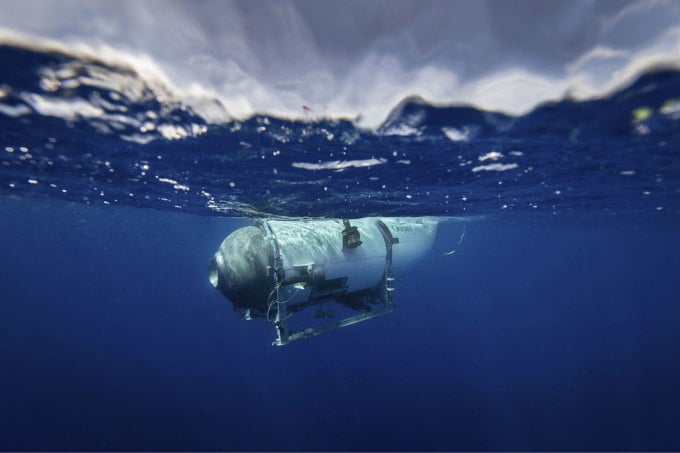
OceanGate's submersible takes tourists to visit the Titanic wreck. Photo: OceanGate
The US Coast Guard is a force that specializes in search and rescue missions at sea, but this situation is still a real "nightmare" for them. "Searching in such remote waters is a challenge," admitted Mr. Mauger, in the context of a race against time to save people before oxygen supplies run out.
The US Coast Guard deployed a long-range C-130 patrol aircraft to the area where the Titan went missing, while the Halifax Rescue Coordination Center also sent a P-8 Poseidon surveillance aircraft capable of underwater reconnaissance to assist. But by the end of June 19, they still did not know whether the Titan was submerged or had surfaced and was floating somewhere.
Craig Hooper, senior commentator on US national security issues for Forbes , said that this search and rescue mission for the Titan ship has exposed some loopholes in the US Coast Guard's underwater rescue work.
As the adventure tourism market has expanded, coast guard agencies have become concerned that U.S. government regulations have not kept pace, with less emphasis on rescue in hard-to-reach areas and a serious decline in submarine rescue capabilities.
In 1960, the US Navy had nine submarine rescue ships and two tugs dedicated to underwater rescue. But they now have no underwater rescue ships after 2012 budget and force cuts.
The U.S. Coast Guard, the agency that leads the nation’s rescue efforts, also lacks underwater rescue capabilities. Much of the submarine rescue business has been privatized, forcing the Coast Guard to work with unregulated civilian submarine operators.
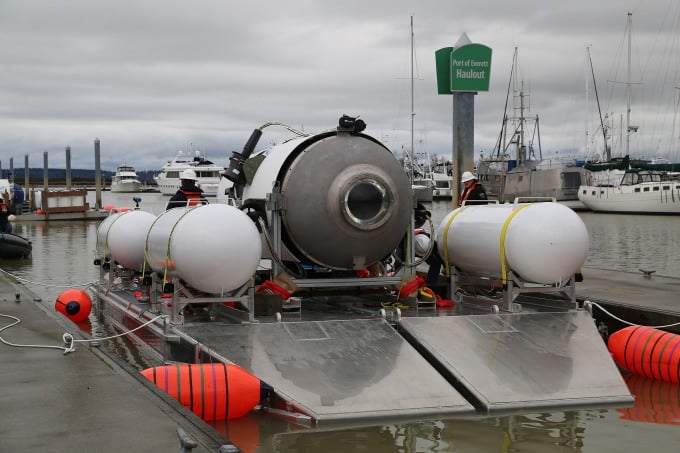
OceanGate's Titan submersible at a port in Everett, US. Photo: OceanGate
Alistair Greig, professor of marine engineering at UCL University, UK, said the worst case scenario for the Titan submersible is that it sinks to a depth of nearly 4,000 m near the Titanic wreck and is unable to resurface on its own.
In that case, the Coast Guard does not have a specialized vessel capable of diving to such depths to assess the situation and plan a rescue. Even if they knew where the sunken ship was, an underwater rescue effort would be complex and dangerous.
Access to the search area is often the most difficult part of the process, as it takes time for authorities to assemble resources. In 2017, the United States deployed its elite Submarine Rescue Team (SER) to help Argentina locate the stricken submarine ARA San Juan.
SER had to arrange eight flights to transport about 356 tons of equipment to Argentina. The first transport plane landed 43 hours after the dispatch order, the last one landed 77 hours later.
Without a dedicated ship, the team had to hire a civilian ship and spend another four days converting the space to hold specialized equipment. After 12 hours of loading the equipment onto the ship, they were able to depart for the search area.
In the current search for Titan, Hooper fears the submersible’s oxygen supply will run out before the SER team can set off. Even if the SER team does arrive, they have few vehicles that can operate at depths greater than 12,000 feet.
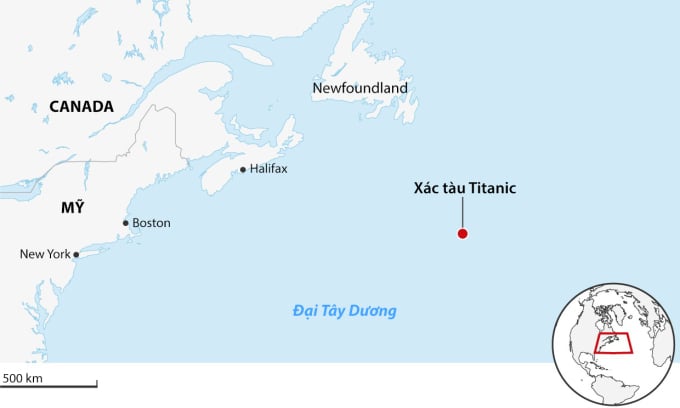
The location of the Titanic wreck in the Atlantic Ocean. Graphic: Guardian
Private vessels may be a last resort, as the US Navy has largely privatized its salvage fleet. But while they may be better at certain tasks, private companies have few resources to search and salvage at these depths.
According to commentator Hopper, the incident with the Titan ship is a sign of the difficult future of the rescue force as civilian underwater exploration activities increase.
“The harsh environment of the deep sea is not for the faint of heart, and thrill-seeking tourists are often ill-equipped to assess the risks of visiting such an area,” Hopper said. “That’s where the U.S. government needs to step in to give them a better chance of survival.”
Duc Trung (According to Forbes, AFP, Reuters )
Source link



![[Photo] President Luong Cuong awarded the title "Heroic City" to Hai Phong city](https://vphoto.vietnam.vn/thumb/1200x675/vietnam/resource/IMAGE/2025/5/13/d1921aa358994c0f97435a490b3d5065)
![[Photo] Many people in Hanoi welcome Buddha's relics to Quan Su Pagoda](https://vphoto.vietnam.vn/thumb/1200x675/vietnam/resource/IMAGE/2025/5/13/3e93a7303e1d4d98b6a65e64be57e870)
![[Photo] Prime Minister Pham Minh Chinh receives Ambassador of the French Republic to Vietnam Olivier Brochet](https://vphoto.vietnam.vn/thumb/1200x675/vietnam/resource/IMAGE/2025/5/13/f5441496fa4a456abf47c8c747d2fe92)

![[Photo] President Luong Cuong attends the inauguration of the international container port in Hai Phong](https://vphoto.vietnam.vn/thumb/1200x675/vietnam/resource/IMAGE/2025/5/13/9544c01a03e241fdadb6f9708e1c0b65)








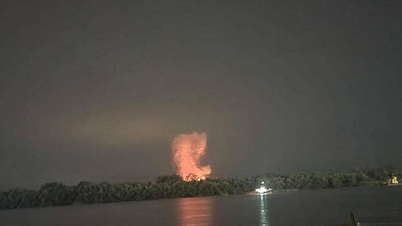





































































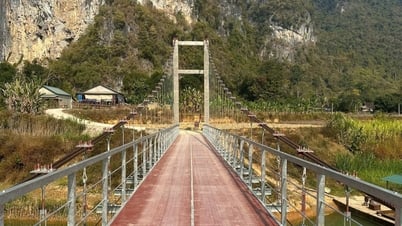












Comment (0)